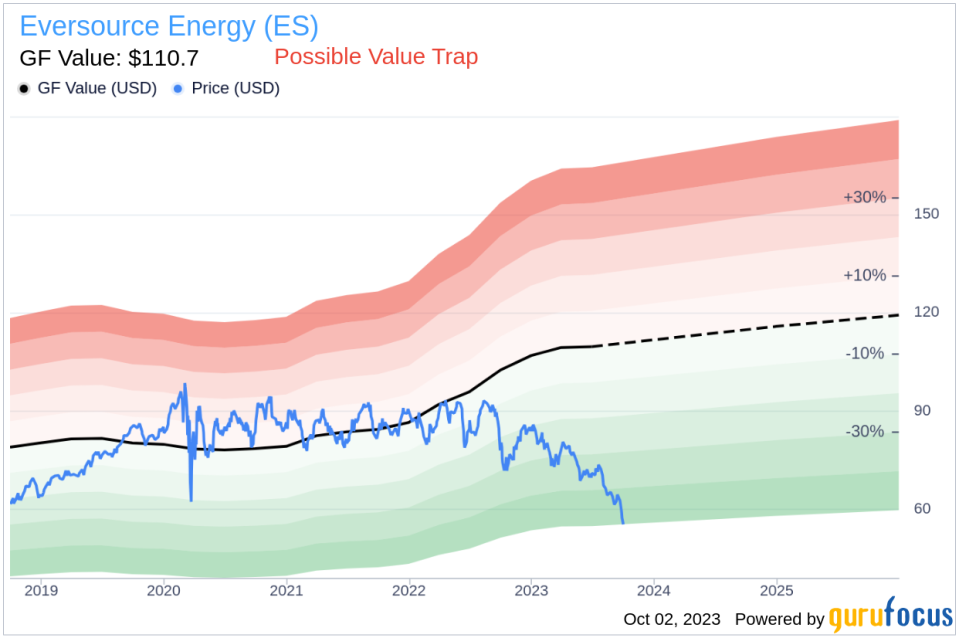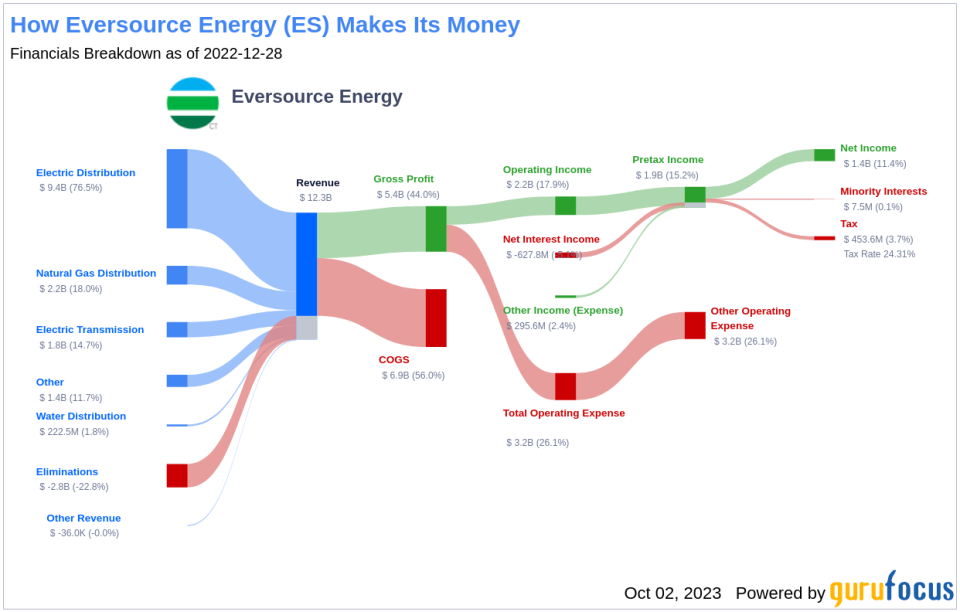Is Eversource Energy (ES) Too Good to Be True? A Comprehensive Analysis of a Potential Value Trap
Value-focused investors are always on the hunt for stocks that are priced below their intrinsic value. One such stock that merits attention is Eversource Energy (NYSE:ES). The stock, which is currently priced at 55.3, recorded a loss of 4.9% in a day and a 3-month decrease of 20.81%. The stock's fair valuation, as indicated by its GF Value, is $110.7.
Understanding GF Value
The GF Value represents the current intrinsic value of a stock derived from our exclusive method. The GF Value Line on our summary page gives an overview of the fair value that the stock should be traded at. It is calculated based on historical multiples (PE Ratio, PS Ratio, PB Ratio and Price-to-Free-Cash-Flow) that the stock has traded at, GuruFocus adjustment factor based on the company's past returns and growth, and future estimates of the business performance.
If the stock price is significantly above the GF Value Line, it is overvalued and its future return is likely to be poor. On the other hand, if it is significantly below the GF Value Line, its future return will likely be higher.
Deeper Analysis: Potential Value Trap
However, investors need to consider a more in-depth analysis before making an investment decision. Despite its seemingly attractive valuation, certain risk factors associated with Eversource Energy should not be ignored. These risks are primarily reflected through its low Altman Z-score of 0.79. These indicators suggest that Eversource Energy, despite its apparent undervaluation, might be a potential value trap. This complexity underlines the importance of thorough due diligence in investment decision-making.
Altman Z-Score Explained
Before delving into the details, let's understand what the Altman Z-score entails. Invented by New York University Professor Edward I. Altman in 1968, the Z-Score is a financial model that predicts the probability of a company entering bankruptcy within a two-year time frame. The Altman Z-Score combines five different financial ratios, each weighted to create a final score. A score below 1.8 suggests a high likelihood of financial distress, while a score above 3 indicates a low risk.
Eversource Energy: A Snapshot
Eversource Energy is a diversified holding company with subsidiaries that provide rate-regulated electric, gas, and water distribution service to more than 4 million customers in the Northeast U.S. The company expanded its service territories with acquisitions of NStar (2012), Aquarion (2017), and Columbia Gas (2020). Eversource is exiting its 50% partnership with European utility Orsted to develop 2 gigawatts of offshore wind projects by 2025. The company exited most of its unregulated businesses in 2006.
Breaking Down Eversource Energy's Low Altman Z-Score
A dissection of Eversource Energy's Altman Z-score reveals Eversource Energy's financial health may be weak, suggesting possible financial distress.
Conclusion: A Potential Value Trap
Given the analysis, it is clear that despite its seemingly attractive valuation, Eversource Energy (NYSE:ES) might be a potential value trap due to its low Altman Z-score. This underlines the importance of thorough due diligence in investment decision-making. GuruFocus Premium members can find stocks with high Altman Z-Score using the following Screener: Walter Schloss Screen .
This article first appeared on GuruFocus.


